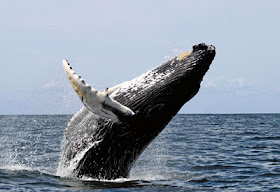 |
| Himalayan tahrs |
Quite how they're related, and which ones are on the goat side of the tree, and which on the sheep side, has been a matter of some debate, and depends largely on whether or not you think that physical appearance is more important than genetic similarity. Even if you look only at the genetics, it seems that they're all close enough to one another that it makes a fair difference which genes you happen to consider most important.
Still, we can say that some look more like goats, and some look more like sheep. On the goat-like side are the tahrs - not to be confused with turs, which really are goats. There are three species of tahr, all of which look fairly similar to one another, and have traditionally been placed together in the genus Hemitragus - a word that literally means "half-goat". In the traditional, appearance-based, scheme it's thought that these are the closest animals to true goats, without actually being them. Genetic analysis, however, shows that this is just an illusion, and the three animals aren't especially close relatives. Two of them, therefore, have been removed from the genus, and given new scientific names to reflect their distinct nature.


